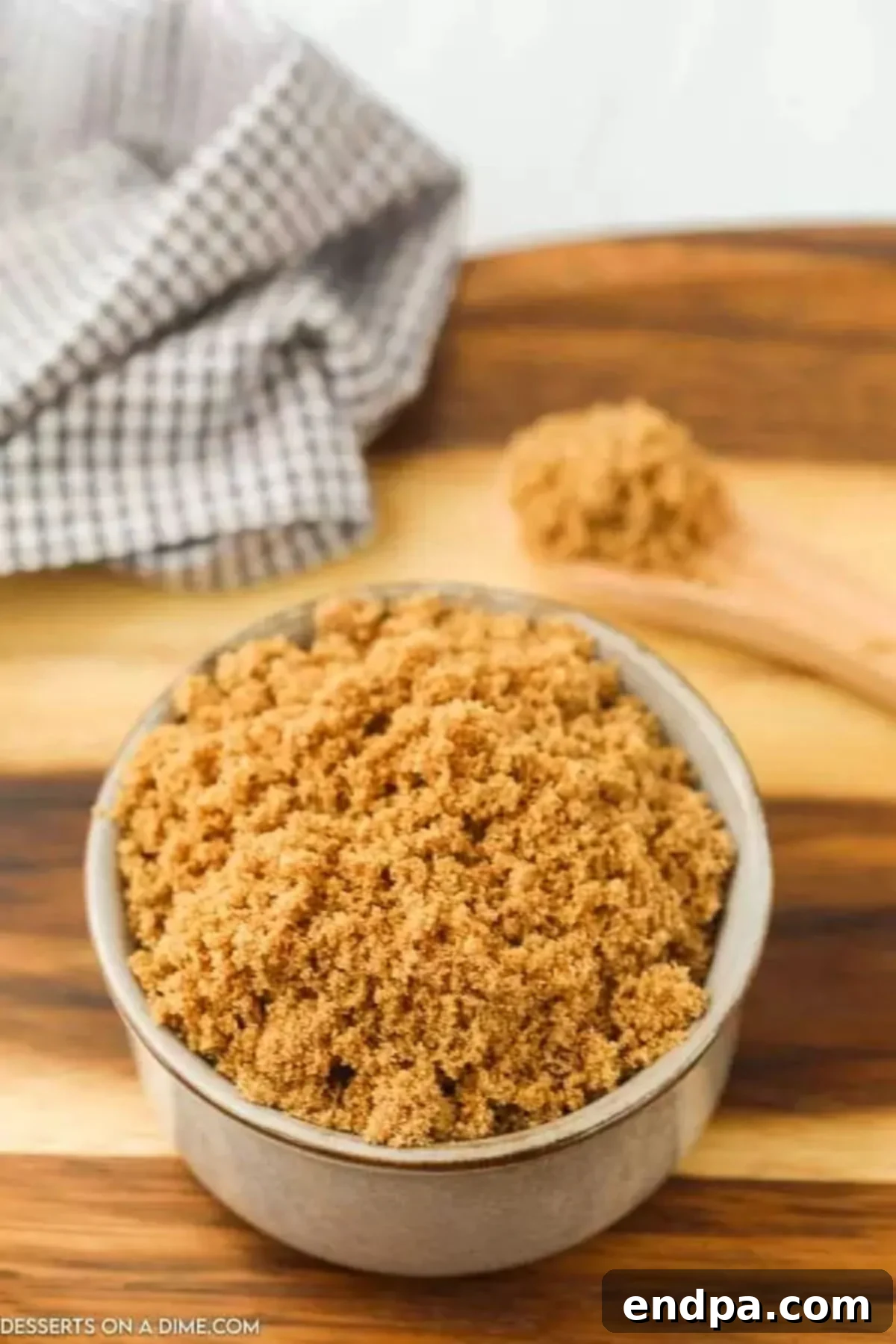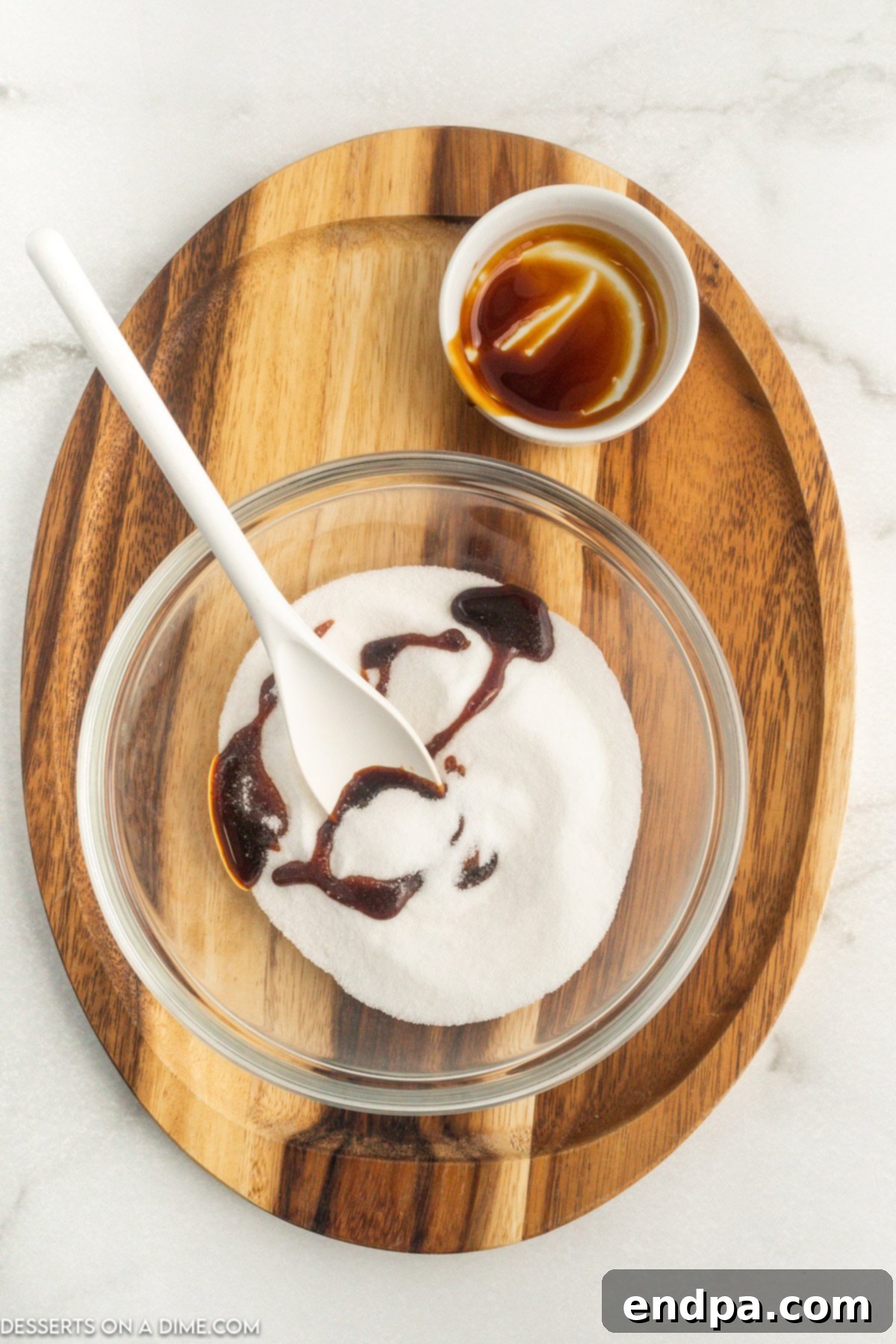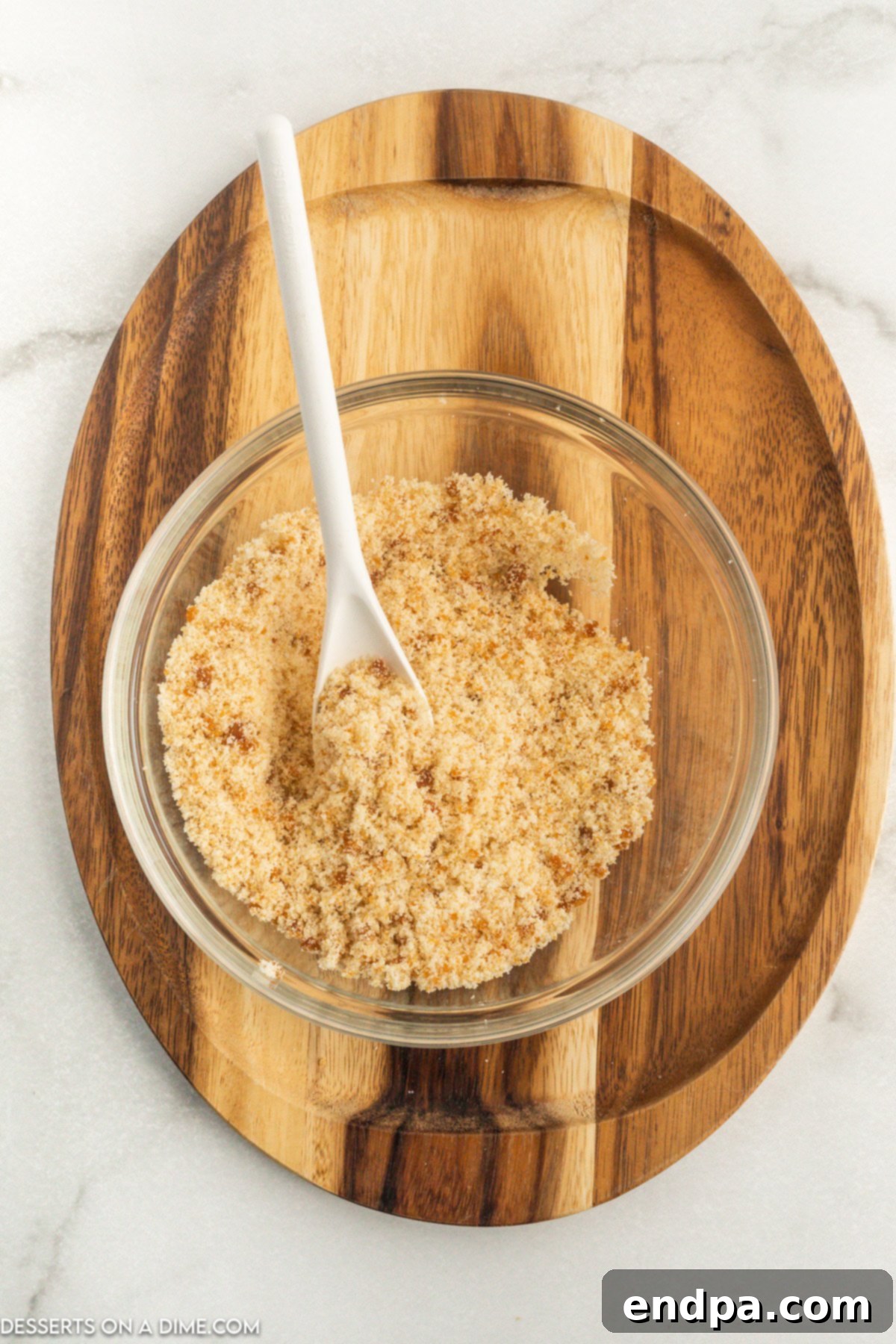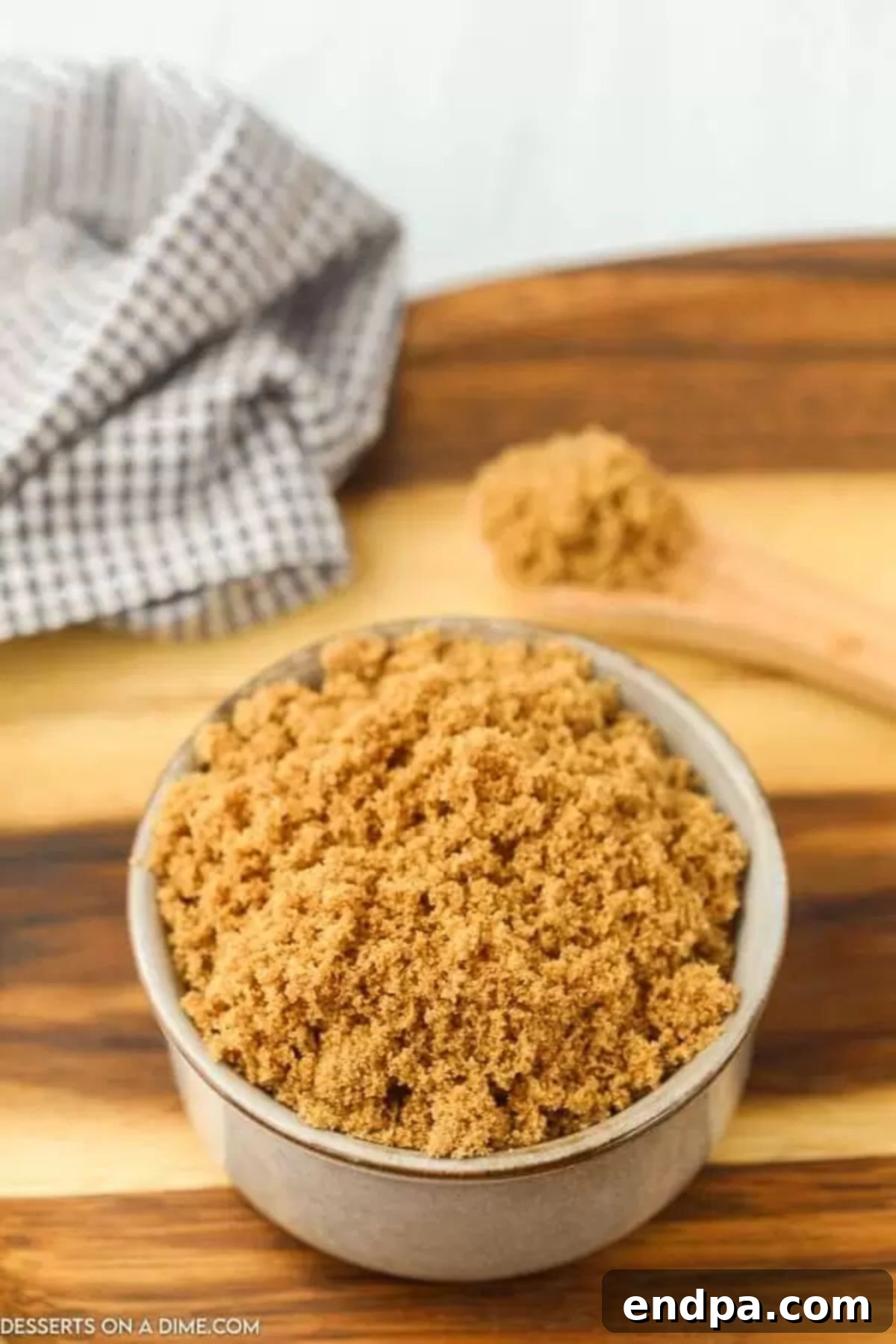Effortless Homemade Brown Sugar Recipe: Your Two-Ingredient Kitchen Essential is incredibly simple to create using just two readily available ingredients. You’ll adore this straightforward homemade recipe, perfect for adding rich flavor and irresistible moisture to all your favorite baked goods.

Brown sugar is a foundational sweetener, celebrated for its unique caramel notes and soft texture, making it an indispensable ingredient in countless baked goods. From chewy cookies to moist quick breads, its presence elevates the end result significantly. While often bought pre-packaged, you might be surprised to learn that making your own homemade brown sugar is remarkably easy, requiring only two basic ingredients you likely already have in your pantry.
Embracing this simple process means you’ll never again be caught empty-handed when a recipe calls for brown sugar. The convenience of whipping up a batch in minutes ensures your baking plans remain uninterrupted. Imagine effortlessly creating your cherished Chocolate Chip Cookies, perfecting a warm loaf of Brown Sugar Banana Bread, crafting a delightful Brown Sugar Syrup, baking festive Gingerbread Kiss Cookies, or enjoying a batch of soft Brown Sugar Cookies, all with freshly made sweetener. I also find immense joy in making a creamy Brown Sugar Frosting, which truly highlights the depth of flavor only brown sugar can provide.
What You’ll Find in This Post: Homemade Brown Sugar Recipe
- Why Make Homemade Brown Sugar?
- Essential Ingredients
- Creative Variations & Substitutes
- Simple Step-by-Step Guide
- Storage Solutions for Freshness
- Frequently Asked Questions
- Homemade Brown Sugar Recipe Card
Why Make Homemade Brown Sugar? Unlocking Baking Convenience and Flavor
There are numerous compelling reasons to embrace the simplicity of making brown sugar at home. Firstly, it’s an incredible time-saver, particularly when you unexpectedly run out mid-recipe. Instead of a last-minute trip to the store, you can have a fresh batch ready in mere minutes. This recipe offers remarkable versatility, allowing you to easily create both light and dark varieties of brown sugar, simply by adjusting the molasses content. The entire process is super easy and requires minimal effort, making it a perfect kitchen hack for any baker.
The magic lies in combining just two components: white granulated sugar and molasses. The ratio of molasses to white sugar dictates whether you produce a light or dark brown sugar. A smaller amount yields a lighter, more subtle flavor, while a more generous addition results in a richer, deeper caramel note, characteristic of dark brown sugar. This control over flavor intensity is a significant advantage of the homemade approach. Beyond convenience, making your own ensures you’re using fresh ingredients, often free from the anti-caking agents found in some commercial brown sugars. It’s also an economical choice, saving you money in the long run.

Essential Ingredients for Perfect Brown Sugar
The beauty of this recipe lies in its minimalist ingredient list, focusing on quality and simplicity. You only need two key components:
- White Granulated Sugar: This forms the base of your brown sugar. Standard white granulated sugar works perfectly. It provides the sweetness and crystalline structure. When molasses is added, it coats these crystals, transforming their color, flavor, and texture.
- Molasses: This is the secret ingredient that imparts brown sugar’s distinctive color, moisture, and caramel-like flavor. The type of molasses you choose will significantly impact your final product.
- **Light or Dark Molasses:** I highly recommend using light or dark molasses for the best results in terms of flavor and texture. These varieties offer a balanced sweetness and depth that are ideal for baking.
- **Avoiding Blackstrap Molasses:** It’s generally best to avoid blackstrap molasses for this recipe and most baking applications. Blackstrap molasses is the darkest and most concentrated form, known for its strong, slightly bitter, and robust flavor. While it has nutritional benefits, its intense taste can overpower the delicate flavors in your baked goods, leading to an undesirable outcome. Stick to lighter or regular dark molasses for that classic brown sugar taste.
The complete list of ingredients with precise measurements can be found at the bottom of the page in the detailed recipe card.
Creative Variations & Substitutes for Molasses
While molasses is the traditional choice for making brown sugar, you can experiment with other liquid sweeteners if you’re looking for different flavor profiles or don’t have molasses on hand. Each alternative will lend its own unique characteristics to your homemade brown sugar:
- Maple Syrup: To make a maple-infused brown sugar, simply add one tablespoon of pure maple syrup to a cup of white granulated sugar. Real maple syrup is highly recommended for its authentic, rich flavor. However, if flavored maple syrup is all you have, it can work in a pinch, though the taste might be less nuanced. Maple syrup will produce a brown sugar with a subtle maple undertone, perfect for pancakes, waffles, or autumn-themed baked goods.
- Agave Nectar: For a milder flavor and lighter color, try adding one tablespoon of agave nectar to a cup of white sugar. Agave is a natural sweetener that is less viscous than molasses, resulting in a slightly lighter texture and a more neutral sweetness profile. This variation is excellent for recipes where you want the moisture of brown sugar without a strong molasses flavor.
- Honey: Using honey as a substitute is quite similar to using molasses, but with its own distinct aromatic qualities. Add one tablespoon of buckwheat honey to a cup of white sugar. Buckwheat honey is particularly good because its darker color and more robust flavor mimic some of the depth of molasses. Lighter honeys can also be used, but the resulting brown sugar will be lighter in color and have a less pronounced “brown sugar” taste, leaning more towards honey. This option adds a floral sweetness that can be lovely in certain recipes.
Remember that the moisture content and flavor intensity of these substitutes differ from molasses, so the texture and taste of your final brown sugar, and consequently your baked goods, will vary. Experimentation is key to finding your preferred variation!
Simple Step-by-Step Guide to Homemade Brown Sugar

Step 1: Combine Ingredients. In a medium-sized mixing bowl, combine your white granulated sugar with the molasses (or chosen alternative like maple syrup or honey). For thorough mixing, you can use a sturdy spoon, a whisk, or even a food processor for a quicker, lump-free result. If using a food processor, pulse until the mixture is uniform and crumbly.

Step 2: Mix Until Uniform. Stir or process the mixture for 2-3 minutes, or until the molasses is thoroughly and evenly distributed throughout the sugar. You should see a consistent brown color, and the sugar should feel moist and slightly sticky, with no visible streaks of white sugar or concentrated molasses. Once achieved, your homemade brown sugar is ready to use immediately in all your favorite recipes.
Pro Tip: If mixing by hand, ensure you really work the molasses into the sugar to avoid pockets of uncolored sugar. The molasses needs to coat every crystal to achieve that characteristic brown sugar texture and flavor. A fork can be particularly effective for breaking up any clumps.
Storage Solutions for Keeping Your Brown Sugar Fresh
Proper storage is key to maintaining the soft, moist texture of your homemade brown sugar. Without it, brown sugar can quickly harden into a solid block, making it difficult to use. Here are some effective storage tips:
- Airtight Container: Always store homemade brown sugar in an airtight container at room temperature. This is crucial for preventing moisture loss, which is the primary cause of hardening. Glass jars with tight-fitting lids, such as mason jars, are excellent choices, as they create an effective seal. You can also use plastic food storage containers with secure lids. Avoid using plastic bags for long-term storage, as they may not provide a sufficient airtight seal.
- Cool, Dry Place: Keep your stored brown sugar in a cool, dry pantry or cupboard, away from direct sunlight, heat sources, or areas prone to humidity. Fluctuations in temperature and humidity can accelerate hardening.
- Longevity: When stored correctly, homemade brown sugar can last for several months, just like its store-bought counterpart. While it won’t spoil, its texture might change over time.
- Preventing Hardening: To help prevent hardening, you can add a moisture-retaining element to your container. A common and effective method is to place a terracotta brown sugar saver (dampened first) or even a slice of fresh bread or a few apple slices in the container with your brown sugar. These items will release moisture, keeping the sugar soft. Just remember to replace bread or fruit slices every few days to prevent mold.

Frequently Asked Questions About Brown Sugar
Even with the best storage, brown sugar can sometimes harden. Here are two effective methods to revive it:
- Microwave Method: Place the hard brown sugar in a microwave-safe bowl. Cover the bowl tightly with a damp paper towel. Microwave in 10-second intervals, checking and breaking up the sugar with a fork after each interval, until it is soft and crumbly. Be careful not to microwave for too long, as the sugar can melt and become unusable. The damp paper towel creates steam, which reintroduces moisture.
- Bread or Apple Slice Method: Place a fresh slice of bread (or a few apple slices) directly into the airtight container with the hardened brown sugar. Seal the container and leave it overnight, or for about 12-24 hours. The sugar will gradually pull moisture from the bread or fruit, softening itself. Once soft, remove the bread or fruit to prevent mold growth, typically after a day or two.
Absolutely! To make dark brown sugar, simply increase the amount of molasses you add to the white sugar. For example, if you typically use one tablespoon for light brown sugar, add another tablespoon, totaling two tablespoons of molasses per cup of white sugar. Dark brown sugar has a noticeably different texture and a much richer, deeper caramel flavor with a more pronounced sweetness compared to light brown sugar. It’s ideal for recipes that benefit from this intense flavor, such as gingerbread, fruitcakes, and certain marinades.
While you can often substitute white granulated sugar for brown sugar in baking, be aware that the final product’s texture and appearance may change significantly. Brown sugar contains molasses, which contributes higher moisture content and a deeper, more complex flavor profile. This moisture is crucial for creating soft, chewy textures in baked goods like cookies, often leading to a slightly puffy result.
Conversely, using only white granulated sugar, which lacks molasses and its moisture, will typically result in a thinner, crispier, and often flatter baked good. The flavor will also be sweeter and less nuanced. For instance, in chocolate chip cookies, brown sugar yields a chewy, moist cookie, while white sugar alone results in a crispier one. Understanding these differences allows you to make informed substitutions based on your desired outcome.
Many bakers find homemade brown sugar to be superior to store-bought varieties. It’s often fresher, free of anti-caking agents, and allows you to control the exact molasses content, tailoring it to your preference for light or dark brown sugar. The flavor is often more vibrant and the texture perfectly soft, making it an excellent choice for any recipe.
When stored in an airtight container in a cool, dry place, homemade brown sugar can last for several months, typically 3-6 months. While it won’t spoil, it may start to harden over time. Following the storage tips and softening methods mentioned above will help extend its usability.
Don’t hesitate to make this today and experience how incredibly easy it is. Plus, your homemade brown sugar will taste fantastic, elevating your next recipe to something truly amazing!
Delightful Dessert Recipes Using Brown Sugar
Easy Candy
Cinnamon Roll Popcorn
Cakes
Crescent Roll Apple Dumplings
Quick Bread
Brown Sugar Banana Bread
Cakes
Oatmeal Cake
Homemade Brown Sugar Recipe
5
5
1 cup
American
Dessert, Baking Essential
828
Carrie Barnard
Ingredients
- 1 cup Granulated White Sugar
- 1 Tbsp Molasses (use light or regular dark, avoid blackstrap for best flavor)
Instructions
- In a medium-sized mixing bowl, combine the granulated white sugar and molasses.
- Stir vigorously with a sturdy spoon or a fork for 2-3 minutes, ensuring the molasses is thoroughly and evenly distributed throughout the sugar. Alternatively, use a food processor and pulse until the mixture is uniformly brown and crumbly.
- Once combined and uniform, your homemade brown sugar is ready to use immediately in all your favorite recipes. Store any leftovers in an airtight container in a cool, dry place.
Recipe Notes
Nutrition Facts
Carbohydrates 214g,
Fat 1g,
Polyunsaturated Fat 1g,
Monounsaturated Fat 1g,
Sodium 9mg,
Potassium 296mg,
Sugar 215g,
Calcium 43mg,
Iron 1mg
Pin This Now to Remember It Later
Pin Recipe
